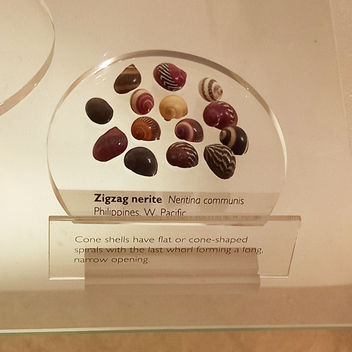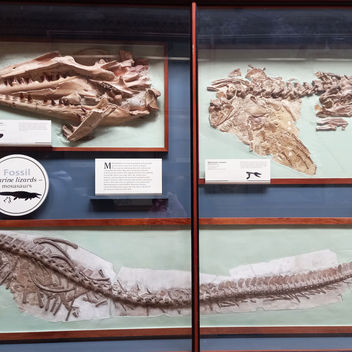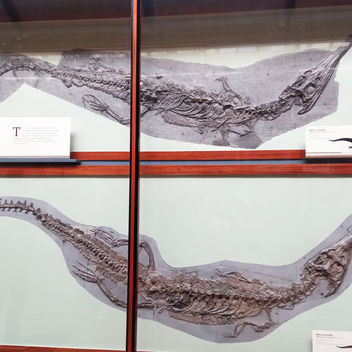After writing down every theme that I liked or an interest in my life, I shortened the list to my top five favourite themes and made a mind-map describing what the theme is and why I like the themes.

I created a small visual mood-board for each of my themes that I could pick to based my final project on.



After looking into the different themes and ideas that I found interesting for this project, and the different sub-themes that I could explore while making work, I chose the theme 'Creatures'.


After looking into the theme and sub-theme I picked for this project I moved onto looking at the different materials, techniques and processes that I want to explore throughout.
I made a list of the materials, techniques and processes that I wanted to explore, techniques that I didn't like and ones which I loved the outcomes of. Then I got the definition of each of these materials, techniques and processes and I then wrote a short explanation of why I chose this technique or how I could use it during this project.

One of the techniques that I used in one of my previous projects and I loved the technique, material and process of was the 'Idea Factory'.
The Idea Factory is an idea generating technique that I used in one of my projects when I was stuck.
For the idea factory you chose three words that help you create pieces of work or gather ideas that you couldn't of thought of by yourself.
The three word groups are: Concept, Material and Process. Using these I made mood-boards in what that word means to me, then using these I started creating mind-maps combining the different words to come up with original ideas.
I loved the outcome of this piece. This was the first time I used collage correctly, and I loved the technique and the process.
I will use this technique in this project to get new ideas that I could create to link to this my theme
For this project I wanted to focus on practical research rather than just researching ideas that I could create and doing more planning than creating work.
For this project one of the primary resources that developed my project was the trip to 'The Natural History Museum' and 'The Design Museum'.
During this trip I took many photos that I used to improve and develop my ideas throughout the project. And I also sketched different ideas that sprung to mind when I saw the pieces in the museums.
Natural History Museum:
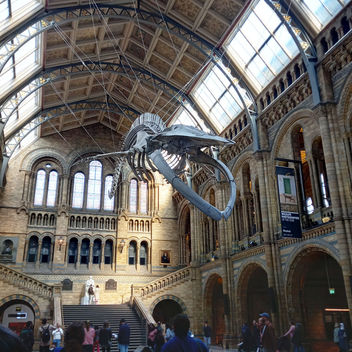
The Design Museum:
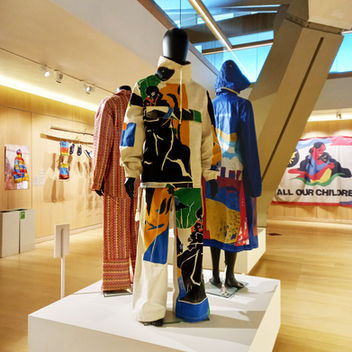
Both of these museums influenced my work greatly throughout the rest of the project. The Natural History museum influenced me to look into the extinct animal route to based my creatures off, and the Design museum inspired me with the different shapes that the clothing had and some of the illustrations that were put onto the cloths inspired me to be detailed in my work.

These are the first drafts of my creative question. I was trying to find the correct wording of my question.
The visits to the different museums, especially the Natural History museum, inspired me to look into the different extinct animals, from the dinosaurs on land to the little creatures in the sea.
It lead me to think about what my creative question would be for this project based off the extinct animal creatures.
My creative question revolves around the idea of 'What if extinct animals evolved with nature to survive'.
I wanted to link nature into the question as it is interesting how different animals and plants in the modern world evolve to their new climate or changes to survive in their habitats. So my final creative question is: 'What if extinct animals merged with nature to survive?'
To further my understanding of how animals go extinct I did research into the theme extinction and the different events that can cause a species to go extinct.
Extinction Research:
Planet Earth is filled with life and includes thousands of species of vertebrate animals (mammals, reptiles, fish, and birds); invertebrates (insects, crustaceans, and protozoans); trees, flowers, grasses, and grains; and a bewildering array of bacteria, and algae, plus single-celled organisms, some inhabiting scalding deep-sea thermal vents. And yet, this rich profusion of flora and fauna seems paltry compared to the ecosystems of the deep past. By most reckonings, since the beginning of life on Earth, a whopping 99.9% of all species have gone extinct.
There are a list of reasons why certain animals and species go extinct: Asteroid strikes, Climate change, Disease, Loss of habitat, Lack of genetic diversity, Better adapted competition, Invasive species, Lack of food, Pollution and Human predation, these are the ten most common reasons for a species to go extinct.
Asteroid strikes:
The first thing that people relate to extinction was the large asteroid strikes that led to the dinosaur's extinction 65 million years ago. It is likely that many of Earth’s mass extinctions not only the K-T extinction, but also the much more severe Permian-Triassic extinction—were caused by such immense events.
The K-T extinction was the last asteroid strike that wiped out the dinosaurs at the end of the ‘Cretaceous period’ - the final period that dinosaurs spent on this earth, it was also the period when dinosaurs attained their maximum diversity, as ornithischian and saurischian families branched off into a bewildering array of armored, raptor-clawed, thick-skulled, and/or long-toothed and long-tailed meat- and plant-eaters. It was also during the Cretaceous period that the Earth began to assume something resembling its modern form. At that time, life was dominated not by mammals but by terrestrial, marine and avian reptiles.
The Perman-Triassic extinction event was the most severe mass extinction in earth's history and was the one that transpired at the end of the Permian period, which annihilated 70% of terrestrial genera and 95% of marine genera. No one knows what caused the Permian-Triassic Extinction, but a series of massive volcanic eruptions resulting in a depletion of atmospheric oxygen which most scientists say was the culprit. It was this "great dying" at the end of the Permian that opened up the earth's ecosystems to new kinds of terrestrial and marine reptiles, and led, in turn, to the evolution of dinosaurs.
Climate change:
Even in the absence of asteroid strikes which can potentially lower the world's atmosphere by 20 – 30 degrees Fahrenheit – climate change has always been a second reason for certain species extinction. The end of the last Ice age about 11,000 years ago when various megafauna mammals (Giant mammals such as the mammoth and giant land sloth) were unable to adapt to quickly warming temperatures. They also succumbed to a lack of food and predation by early humans. And, the long-term circumstances of the current state climate change are in, in modern times.
Disease:
Disease isn't a likely cause to be the main cause of extinction to a species, there could be many other variables that could inhabit these species to get extinct from a lethal disease such as starvation, loss of habitat, and/or lack of genetic diversity through evolution. The introduction of any lethal virus or bacterium at an inopportune time can devastate certain species. The current crisis facing the world’s amphibians, which are falling prey to chytridiomycosis, a fungal infection that ravages the skin of frogs, toads, and salamanders, and causes death within a few weeks.
Loss of Habitat:
Most animals require a certain amount of territory to sustain their species. In these territories they hunt and forge, breed, and raise their young, as well as have room (when/if necessary) to expand their territory. A bird species may just need a branch or a tree to do these things to keep their species alive but large predatory animals like tigers measure their domains in square miles. As human civilization expands relentlessly into the wild these natural habitats diminish – due to the rapid loss of habitat the different species become more susceptible to other extinction pressures.
Lack of Genetic Diversity:
Once a species starts dwindling in numbers, there’s a smaller pool of available mates and often a corresponding lack of genetic diversity. Because of this small pool there is no room for there to be new mates of the species to develop and evolve genetics, if the small pool of animals mate it will run the risk of the next generation having undesirable genetic traits like susceptibility to fatal diseases. An example of this is: because of extreme habitat loss, today’s dwindling population of African cheetahs suffers from unusually low genetic diversity and because of this may lack the resilience to survive another major environmental disruption.
Better adapted competition:
There is always a risk of scumming to a dangerous tautology: by definition, ‘better - adapted’ populations always win out over those that lag behind, and we often don't know exactly what the favorable adaptation was until after the event. For instance, no one would have thought that prehistoric mammals were better adapted than dinosaurs until the K-T extinction. Usually, determining which is the "better adapted" species takes thousands, and sometimes millions, of years.
Invasive species:
While most struggles for survival transpire over eons, sometimes the contest is quicker, bloodier, and more one-sided. If a plant or animal from one ecosystem is inadvertently transplanted into another (usually by an unwitting human or an animal host), it can reproduce wildly, resulting in the extermination of the native population – animal or plant. That's why American botanists wince at the mention of kudzu, a weed that was brought to America from Japan in the late 19th century and is now spreading at the rate of 150,000 acres per year, crowding out indigenous vegetation.
Lack of food:
Mass starvation is the quick, one-way, assured route to extinction—especially as hunger weakened populations are much more prone to disease and predation—and the effect on the food chain can be disastrous. An example of this would be if scientists find a way to permanently eliminate malaria by exterminating every mosquito on Earth. At first, that may seem like good news for humans, but the domino effect of all the creatures that feed on mosquitoes (like bats and frogs) goes extinct, and all the animals that feed on bats and frogs, and so on down the food chain, till eventually the food chain that has the mosquitoes as a primary consumer is extinguished leading all of the animals to either evolve and find different food sources or become extinct.
Pollution:
Marine life such as fish, seals, coral, and crustaceans can be exquisitely sensitive to traces of toxic chemicals in lakes, oceans, and rivers—and drastic changes in oxygen levels, caused by industrial pollution can suffocate entire populations. While it's nearly unknown for a single environmental disaster (such as an oil spill or fracking project) to render an entire species extinct. Constant exposure to pollution can render plants and animals more susceptible to other dangers, including starvation, loss of habitat, and disease, which can cause species to go extinct.
Human Predation:
Humans have only occupied the Earth for the last 50,000 or so years, so it's not fair to blame the bulk of the world's extinctions on the human species. There's no denying, though, that humans have wreaked plenty of ecological destruction during our brief time on this earth: hunting the starved, straggling megafauna mammals of the last Ice Age; depleting entire populations of whales and other marine mammals; and eliminating the dodo bird and the passenger pigeon virtually overnight.
Artist Research:
After completing in-depth research about 'Extinction', I moved onto my artist research. I looked at the specific illustrators that create work based off extinct animals, like dinosaurs and I looked at artists who mixes animals with nature. I also looked into a historical contemporary artist that links to illustration. I planned which artist I wanted to explore while completing my extinction research






After completing these artists research, I developed my project further leading me to look at different artist to help with the development of this project.
I developed this project into looking at the creatures that are near to immortal. After looking at the animals that went extinct and how they became extinct due to different events, I started thinking about the different animals that don't die, like micro-organisms that can't be seen by the naked eye, such as 'Tardigrades' or more known as 'Water-bears' or 'Moss piglets'.


Developed Artist research:
Using this developed research, I thought about what I wanted to make for my final piece as I wanted this topic to be the base for my ideas.










Exhibition Presentation:



pieces.





